
- Ages 3 & Up
- For 2-4 players
- 15 minute playing time
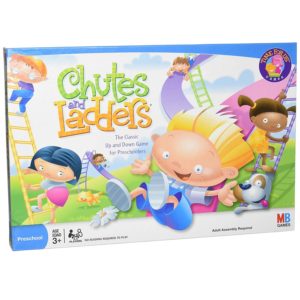
- Ages 3 & Up
- For 2-4 players
- Practice Counting
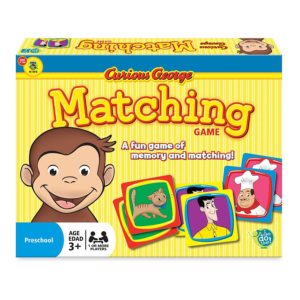
- Ages 3 & Up
- For 1 or more players
- 15 minute playing time
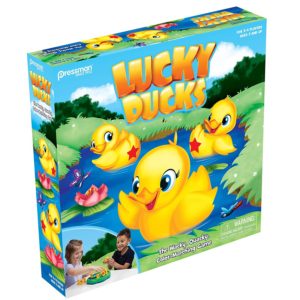
- Ages 3 & Up
- For 2-4 players
- Memory and Matching Game

- Ages 3 – 5
- For 1 or more players
- Tool for Learning
Choose the Best Board Game for 3 Year Olds
Customer’s Choice: the Best Rated Board Games for 3 Year Olds
32 users answered this survey. Please help us improve this review!
Board games improve a 3-year-old child’s social, cognitive and emotional skills while allowing them to spend time with family members. They can also teach children about taking turns, good sportsmanship and following simple rules – all necessary for entering school and as an adult.
Benefits of board games for preschoolers
One of the most effective ways to learn and improve children’s skills, both cognitive and non-cognitive, is by playing board games. Compared with other kid activities like watching TV or surfing internet, playing educational board game has more benefits such as:
- improves memory and brain development;
- stimulates creativity, imagination, social skills and logical thinking;
- fosters family bonding;
- expands vocabulary and nurtures language skills;
- fosters healthy competition;
Board games can also help kids practice basic arithmetic, letters or words recognition, spatial awareness and much more. The early exposure to board games for preschoolers will eventually lead them into better school years ahead.
When it comes to children, the best toys and games are those that can be played with together. Playing board games is a great way for families to spend time together while teaching kids important skills like reading, math, and critical thinking. In this guide, experts have compiled a list of our favorite board games for 3-year-olds based on product reviews from other parents as well as experts in the field. You will also get some helpful tips about how to choose the right game if you don’t know where to start!
Table of Contents
Candy Land Kingdom of Sweet Adventures Board Game – the Editor’s choice
 The world of Candy Land is a sweet and innocent place, full of surprises. This quaint board game will bring back memories for older players who played when they were young.
The world of Candy Land is a sweet and innocent place, full of surprises. This quaint board game will bring back memories for older players who played when they were young.
This game features adorable illustrations for little ones to enjoy, colors that will help teach kids about shapes, and games that are designed so reading skills aren’t necessary.
Candy Land: Kingdom of Sweet Adventures Board Game can be a great way to entertain and teach your little ones. The game features colored cards, sweet destinations, and fun illustrations that kids love!
Chutes and Ladders Game – the best for learning how to count!
 Have you ever played Chutes and Ladders before? This timeless classic has entertained generations of kids. Introduce your 3-year-old to the game with this easy to understand game.
Have you ever played Chutes and Ladders before? This timeless classic has entertained generations of kids. Introduce your 3-year-old to the game with this easy to understand game.
The perfectly-balanced, 3D board top will have kids scrambling to the top. You land on good deeds to climb ladders, but watch out for chutes! Kids can practice counting and number recognition as they travel along the game board.
This game can be a perfect opportunity for kids to practice counting and number recognition as they are racing up those ladders. They will need to develop a keen eye and an agile mind if they want to win!
Wonder Forge Baby Animals Matching Game – the best for developing critical skills!
 Introducing the most adorable matching game on the planet together with 72 tiles packed with a stack of giggles waiting to happen. Whether your youngster is looking for solo play or wants some adult company – they’ve hit pay dirt with this great joint venture that combines matching skills and development of critical abilities.
Introducing the most adorable matching game on the planet together with 72 tiles packed with a stack of giggles waiting to happen. Whether your youngster is looking for solo play or wants some adult company – they’ve hit pay dirt with this great joint venture that combines matching skills and development of critical abilities.
Kids won’t be bored for hours with this awesome game! It will help kids learn to match shapes, colors, and patterns and they’ll get a sweet lesson in animal recognition. Cute pictures include puppies, kitties, ducklings, lion cubs and more.
Your child will love this board game because it offers uniquely adorable characters, clear instructions, great solo play opportunities for preschoolers, and adults to join in!
Pressman’s Lucky Ducks – the best for developing memory skills!
 Pressman’s Lucky Ducky Game is a modern twist on a classic card game you know and love. A kid can play by his or her own or with friends to find matching ducks – then watch them try their luck in getting the points.
Pressman’s Lucky Ducky Game is a modern twist on a classic card game you know and love. A kid can play by his or her own or with friends to find matching ducks – then watch them try their luck in getting the points.
This game will have you quacking-up in laughter as each new round brings plenty of fits of giggles. It’s not only an engaging memory game, but also includes color recognition skills that kids need while they play independently.
Kids can practice their matching and memory skills thanks to easy rules – they should simply follow the quack sound they make until they stop. This modern take on a classic childhood game also boosts memory and color recognition.
Catch & Count Wooden Fishing Game – the best for developing fine motor skills!
 It’s never too early for your kids to learn while they play at the same time! With this fun Catch & Count Wooden Fishing Game, you’ll find your child standing up a little straighter and eyeing their surroundings with more interest. Fishing is always an exciting game but adding the sense of accomplishment when fishing and catching numbers makes it even more stimulating.
It’s never too early for your kids to learn while they play at the same time! With this fun Catch & Count Wooden Fishing Game, you’ll find your child standing up a little straighter and eyeing their surroundings with more interest. Fishing is always an exciting game but adding the sense of accomplishment when fishing and catching numbers makes it even more stimulating.
The Catch & Count Wooden Fishing Game includes 2 magnetic rods and 10 magnetic fish that are numbered and patterned, making an exciting game that not only teaches children how to read numbers but also builds confidence while it helps develop hand-eye coordination, fine motor skills, problem-solving, interpersonal skills, and math skills.
With this quality-built game, kids are fishing for all 10 of our adorable little colorful magnetic fish. Built in number and pattern recognition, this sweetly sensible magnet game helps develop fine motor skills, problem solving and interpersonal skills.
The Buyer’s Guide
How To Entertain a 3-Year-Old?
They are very curious and eager to learn new things. They love action, entertainment and fun. At this point in their development, they also enjoy playing with other kids, so if you have more than one child or a few playmates for your toddler around the neighborhood that’s great!
In case you don’t know how to entertain them yet. Most 3-year-olds like playing with blocks and cards, coloring books, puzzles and board games. They will also enjoy toys that are meant for slightly older kids such as train sets or toy cars.
Here a few ideas for modern parents about how they can entertain their 3-year-old kids:
- Draw pictures with your finger on the touch screen device;
- Take a “pet” picture of your stuffed animals and name them. Also put them in their house and feed them. This could be an ongoing pretend play scene;
- Have your child tell you what they would like to say into the recording app. (If you don’t already record conversations between you and your tot, this is great one – and kids love listening to themselves)
- Create a gingerbread house together, and use the Christmas Story app for inspiration;
- Put on some music or dance with your child! Or sing songs that you know together (or make up some). This is one of my favorite activities to do with my preschooler – dancing makes us both giggle like crazy;
- Sing songs from Sesame Street (Kids sing best when they are playing, moving and having fun);
- Use apps such as Wheels on the bus, The Itsy Bitsy Spider, Twinkle Little Star. There are many interactive storybooks on the market right now as well – be sure to check them out;
- Have your child “feed” their stuffed animals or pretend people using food apps, such as Fruit Ninja (comes preloaded on many tablets);
- Turn your tablet into an aquarium by using the fish app;
- Make a paper airplane and fly it around on the screen. It’s much fun than watching them fly in real life;
- Play some games together, such as Tic Tac Toe/Connect 4/Battleship (a little more advanced) or Cooties/Duck Duck Goose (easier);
- If you have to run an errand in the car together, let your child pick a playlist he would like you to listen to – and sing along;
- Draw on the tablet with your child using a dry erase marker. It’s easy enough for kids to do themselves and they are often very proud of their masterpieces. You can also have them draw on the screen directly by downloading apps such as Doodle Buddy or any other drawing program;
- Have fun watching a movie together! Little kids love musicals and animated movies. And if you’ve already seen them all several times – check out those new releases on Netflix for kids that just came out this year;
- Another great activity is playing with play dough (or slime!) on the tablet – it doesn’t make a mess, and there’s tons of different colors and textures to choose from;
- Board games are always a great way to spend time with children, too. It is a simple way to introduce ABC, basic math skills and build cognitive abilities in an entertaining way;
Are Board Games Good for 3-Year-Olds?
In case you didn’t know, board games can be equally fun for parents and children. Everyone should be playing them. Board games are fantastic for families to play together for educational and entertainment purposes, but these games in particular are a must-play for your 3-year-old son or daughter.
Board games can become a great activity for you and your children because they are:
- Developmental. Board games help develop motor skills so kids will be better on the playground at school. They are also educational in nature allowing them to visually observe animals or numbers in an interactive way that television cannot provide;
- Positive reinforcement. Not only are kids rewarded when they win a game, but when they lose a game they have fun, too! Rather than focusing on what is wrong, parents should focus on what is right and help kids set goals to improve their next game;
- Unconditional love. Every child wants to be loved unconditionally by his or her parents, but sometimes that unconditional love comes with conditions such as good grades or perfect behavior. Board games allow your children the opportunity to achieve something positive without those conditions attached;
- Fun. Fun should always be at the top of the list when selecting board games for kids because if they are not having fun then you most likely will not have fun either! Kids’ board games do not require long hours of playing time. In fact, many only require between five and twenty minutes maximum. This way parents can spend quality time with their children without sacrificing any of their precious free time;
- Family bonding. There is no better way to bond with your children than by playing an engaging board game together. Instead of asking kids what they want to do, why not propose a fun activity that you also enjoy and plan it at a time when everyone can participate! Parents should take advantage of every opportunity possible so they can make lasting memories with their family as well as create happier and healthier lives for their children;
Board games are truly great for developing skills in young children so instead of letting them play with electronic toys or watch television aimlessly try the many benefits provided by board games for kids.
Tips for parents who choose a board game for 3-year-olds:
- Skills you want to develop in your child: language, logic;
- Age-appropriate games. 3 years old can play a game designed for 5-6 years olds such as “Don’t wake Daddy”, but which is much more suitable and fun? A game that is made for children of their age! This will be easier and more rewarding;
- It should be fun. But do not think that a game or toy whose purpose seems obvious to us, automatically becomes an attractive toy for a child. His world is very different from ours and many of the things we consider fundamental may be useless or even incomprehensible concepts to them. For example, most children this age have little interest in the classic puzzles where they have to put pieces or build something with a plan. They prefer games that stimulate their imagination and creativity;
- Games with many pieces can frustrate children at this age, because they have not yet learned to be careful and often lose the pieces while playing. For them it is also difficult to understand some of the rules so that it takes longer than expected for them to play. Fortunately, there are now more and more games aimed at preschoolers, designed to do everything for you: from package to finish. All you need is a table! It does not take up too much storage space, it’s easy to open and close quickly if necessary (when your child finishes early) and can offer hours of entertainment both alone and with others;
- Are you willing to invest time and effort in learning a game or is it better that the game includes instructions of use? What is your level of tolerance when it comes to reading manuals to understand how a toy works? Is your child patient enough to wait for you while you try out what this new mystery toy does? Board games tend to have rules clearer than other similar toys, but still may require an initial investment of time if they are too complex. If this aspect worries you, look for games where there is no need to constantly refer back and forth. They usually include everything a child needs in one package: packaging, play map, playing pieces. However, these products are currently very popular around preschoolers; which means that they are quickly exhausted;
- For a first experience, it’s a good idea to choose a game with a short duration so that if your child does not like it after 5 minutes of playtime, you will not have wasted too much time and effort. Of course, this is no reason to buy only simple games for children at this age, but simply helps parents who want to control the investment required by the game. It is also important to note that many preschoolers prefer games without winners or losers; so expect your kids to be more interested in having fun with friends than winning. Of course, there exist different types of players and some games are really challenging even at this age, but once again remember: choosing an appropriate game for this age is in the first instance a parental matter;
- Sociability. How much time do you spend playing alone? If your child is happy to play alone, it does not matter which game you choose. However, if they prefer to play with others, here are some tips that may help find what you’re looking for. Even if card games seem easier to transport and store than board games, keep in mind that most children at this age range will have difficulty learning the rules of a new card game! As mentioned above, many preschoolers like cooperative games (play side by side) because they encourage social interaction. But if your children prefer competition or tends to win more often than his friends, look for a board game where players do not play as a team but against each other;
- Board games often include elements that allow parents to choose whether it’s a battle or coop. The trick is, most children in this age range will tend to choose collaboration and will be happy with everyone winning together; which means that even them, they can win all the time! However, if you know your child likes confrontation, look for games where there is no collective victory; prefer those where every player has his own track.
FAQ
How do you play the board game Candy Land?
Candy Land is a simple board game for preschool children. Each player starts at the “start” square and moves his/her token forward to each successive square until he or she reaches the last square, the “end” space. The path between the squares consists of colored spaces that match candies depicted in pictures on cards drawn from a deck.
On each turn, players pick up a card that shows four colors and directs them to move their token forward to the next matching color. If they land on a multicolored space, they must draw again from the pile until they receive one card showing only one color before moving forward again.
The winner is determined by whoever ends up closest to the final space at “home”. The other possible ending space is considered a “lose” square. The candies are depicted on the cards, but they don’t play any part in the gameplay itself. Since there is no opponent, however, you could technically play Candy Land against yourself by drawing two cards each time to move two tokens.
What is the theme of the Candy Land board game?
The theme of the Candy Land board game involves a race between various characters including the player to reach King Kandy’s castle first. The terrain is represented by various types of candy. Over 20 different versions of Candy Land have been made over the years, with new variations continually being added due to popular demand. Candy Land: Kingdom of Sweet Adventures is one of the most recent versions created by Hasbro.
Can a 3-year-old play Candy Land?
Absolutely. The object of the game is to reach King Kandy, whoever reaches him first wins. This means that if you’re playing with a 3-year-old and they cannot read yet, then they will just be thinking about when they get to pick cards up off of the top of the deck or putting down cards within the grid on their own accord. There is nothing complicated about this game at all, it was purely about picking cards up and laying them down as fast as you can. If your child doesn’t know how to read yet but he’s good at matching colors then he’ll definitely be able to play this game well into his old age.
Is Candy Land like Chutes and Ladders?
So, if you don’t know, Chutes and Ladders is a game in which little kids have to move their pieces along a board that has a bunch of ladders for them to climb and chutes (slides) for them to slide down. The number on the square determines how many spaces you move your piece. The picture shows a completely random run of the game.
Candy Land is similar to Chutes and Ladders in how simple it is to play. It also has ladders (one can only go up) and slides (the candy people slide back to the start). However, there are some differences.
First of all, instead of just being a number from 1-100, it has pictures that show the number. Like on Chutes and Ladders, you get to pick which path you want to go down. However, on Candy Land you always choose first (because if you don’t then how will anyone know where they’re going).
How do you play Chutes and Ladders?
Chutes and Ladders is a game of luck for young children. Players take turns to roll the dice, with the goal being to get around 100 points – most commonly by reaching the top square on the board (100). First one there wins! Each square on the way up has a chute which sends you back 1-10 squares, while passive ladders allow you to move forward as many times as they contain arrows. There’s also an opportunity to land on Chance or Community Chest cards at certain squares, which may result in good or bad things happening.
Can a 3-year-old play Chutes and Ladders?
Yes. There are two versions of this game: the original version for ages 6 and up, and a preschool version for 3-year-olds. The difference is in the number of squares each player must hop on their turn. In a game for 3-year-olds, players must move four spaces on their turn instead of six.
How to play the Curious George matching game?
Shuffle all cards and place them face down. The child who is playing will go first. On a turn, a player turns over two cards at once from the top of the deck. If they are a match, he keeps them and has another turn. Otherwise, they are turned back over (without being flipped) and it is the next player’s turn to make a pair. If even after trying hard the player cannot find a pair, then he/she must draw one card from the bottom of the pile. That continues until a pair is made or time runs out; in either case, whoever finishes first gets bonus points!
Children aged 3-5 years can play by simply turning over only one card at a time, and not worrying about time. While somewhat slower, this allows them to think about what they have already seen as well as what is currently face up.
As your child progresses in his or her skills, he or she might want more of a challenge – try it alone where he or she has to do both cards on the same turn without hints or help. Or he or she can play with friends and practice memory and observation skills simultaneously!
How do you play the Pressman Lucky Ducks board game?
Each player picks up a duck, examines the color and shape, and keeps it if it matches their colored shape. They put it back if the color or shape are different. The first player with three ducks wins.
Is a Catch & Count Wooden Fishing game good for a 3-year-old?
A Catch & Count Wooden Fishing game is a great way for children to develop their problem solving skills and learn about cause and effect. The idea of the game is simple – a magnet on the end of a string drops down into different holes in the board, where it gets stuck. To get the magnet out again, you need to turn it around with your fingers, so that the end of it falls into another hole – this releases the object from its hold.
Board games for little children are important due to many reasons. The age when is recommended to introduce a child to board games is changing: now there are games for children aged over 2-3 years. But what are the criteria for choosing a tabletop game for such a small child? The range of titles is quite large, and it is easy to get lost (especially if the parents are inexperienced gamers).
Criteria for choosing the board games for 3-year-olds
First of all, you should take care of the safety of the child. Kids at this age all try to taste everything – so the details of the game should be large enough that they cannot be swallowed. For the same reason, the game’s materials must be natural: dense wood, cardboard, and only hypoallergenic dyes. That is why it is important to pay attention to the manufacturer: U.S. companies care about their product quality, which is not the case with the so-called cheap replicas. That is why it is better to buy original board games.
The next thing you should pay attention to is the design. 3-year-olds usually pay attention to bright things. As a rule, all the games for small kids are designed with this feature in mind: bright colors and simple, understandable rules with large pictures.
Another important criterion is the variability of rules. Agree, a tabletop game that provides different levels of complexity or various versions of the rules for the same set of components, much longer than a similar game with only one version of the rules. Of course, you can come up with your own rules and even mix different games.
At this age, children can hardly concentrate yet, it’s difficult for them to keep their attention longer than 10-15 minutes. So, it is important that the picked games do not take much time.
Usually, board games designed for 3-year-old kids must be aimed at developing:
- attention span;
- visual memory;
- fine motor skills;
- interpersonal skills;
- speech;
Jenga-Game.Com picked top 5 best board games for 3-year-olds:
- Candy Land is good for the age of over 3 years. Each session lasts no more than 15 minutes. Great for the team of 2-4 players;
- Chutes and Ladders is practice counting, for the teammates aged over 3 years old;
- Curious George Matching is good for solo or team play. Every session lasts only 15 minutes;
- Lucky Ducks is a memory and matching game, for 2-4 players;
- Melissa & Doug is also good for solo and team play. A great tool for learning;
What games can you recommend for 3-year-olds? Please share your favorite tabletop titles for small children in the comments. Subscribe to our newsletter to email and get the notifications about the updates from Jenga-Game.com!
Video Tutorial: Chutes And Ladders Gameplay
Final thoughts
If you’re looking for a way to spend time with your family and teach your children important skills, it may be worth considering board games. Board games are not only fun but educational as well! You can read more about the favorite 3-year-old board game picks in this guide or look at what other parents think of these products online. Hopefully, one day soon, every child will have the opportunity to grow up surrounded by their families playing these awesome games together.

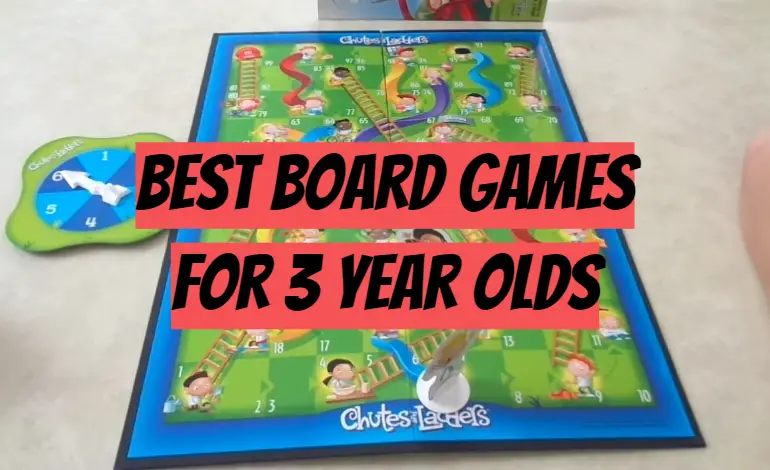
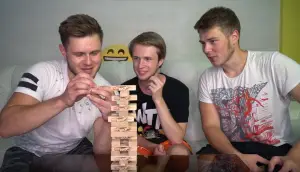
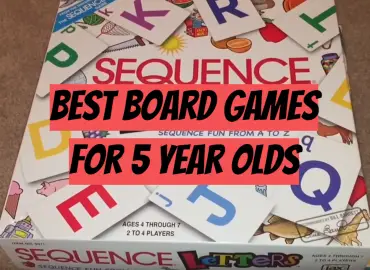
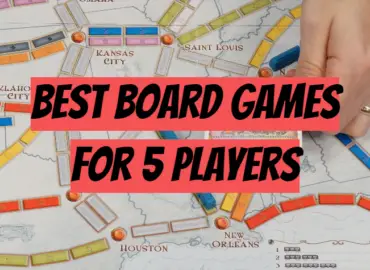
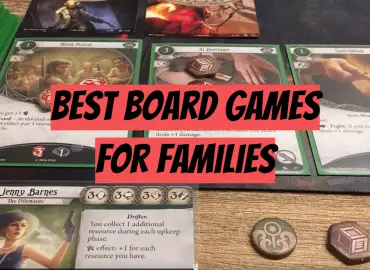
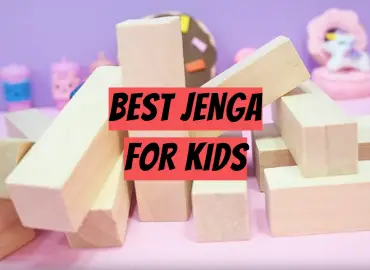
I love how you included Candy Land on this list! It’s been one of my favorite games ever since I was a little child. In my opinion, it might be the best game ever created. The first time I played it, I fell in love and continue to every single day.